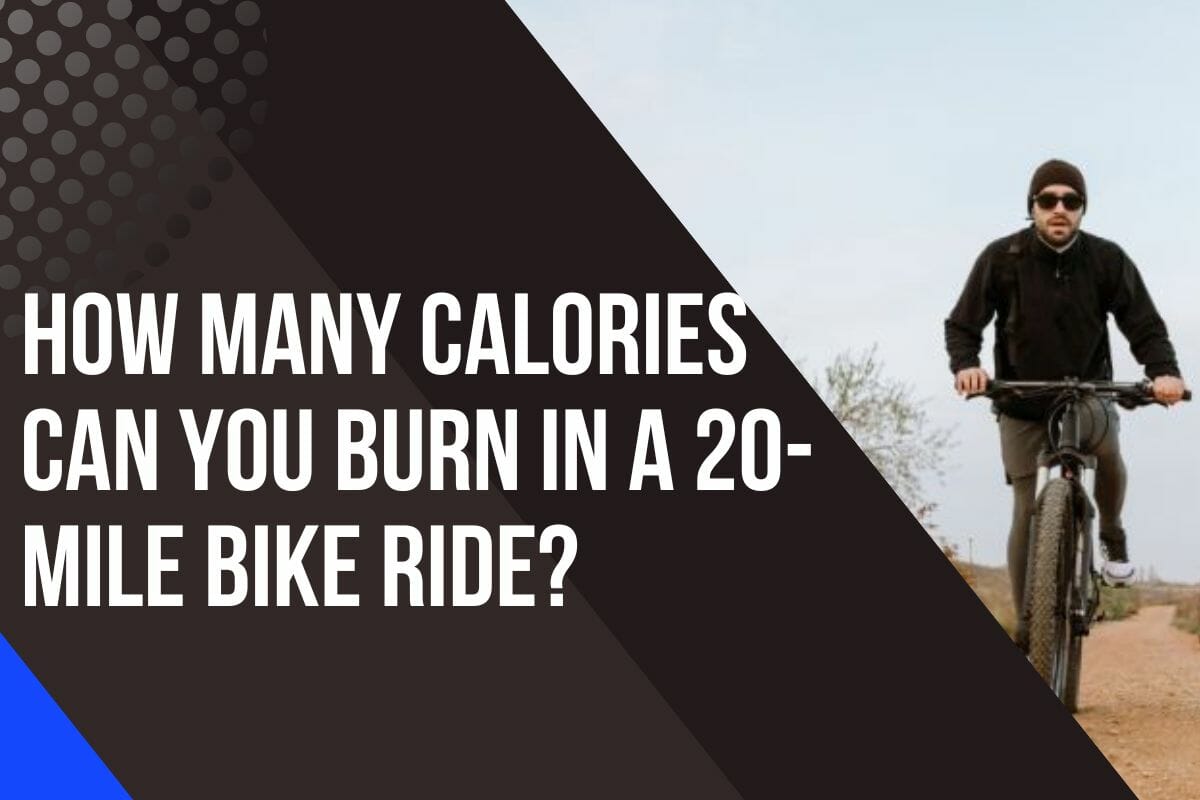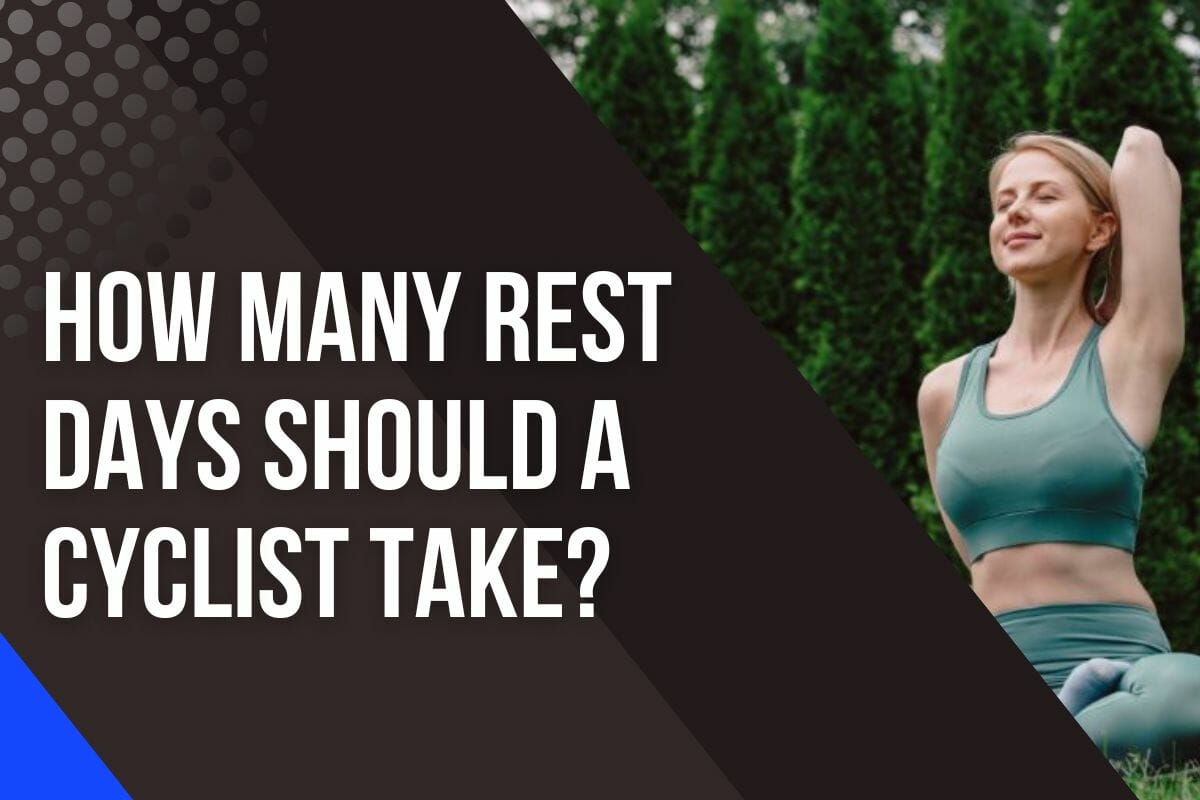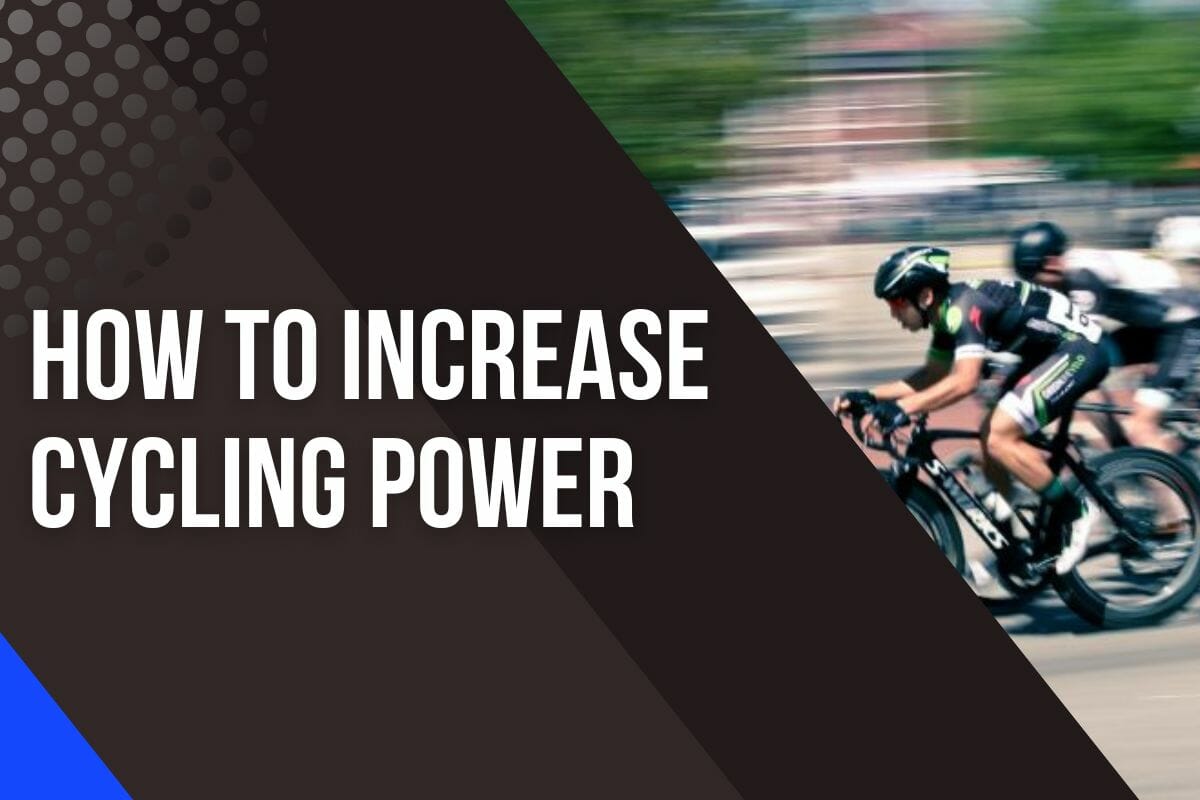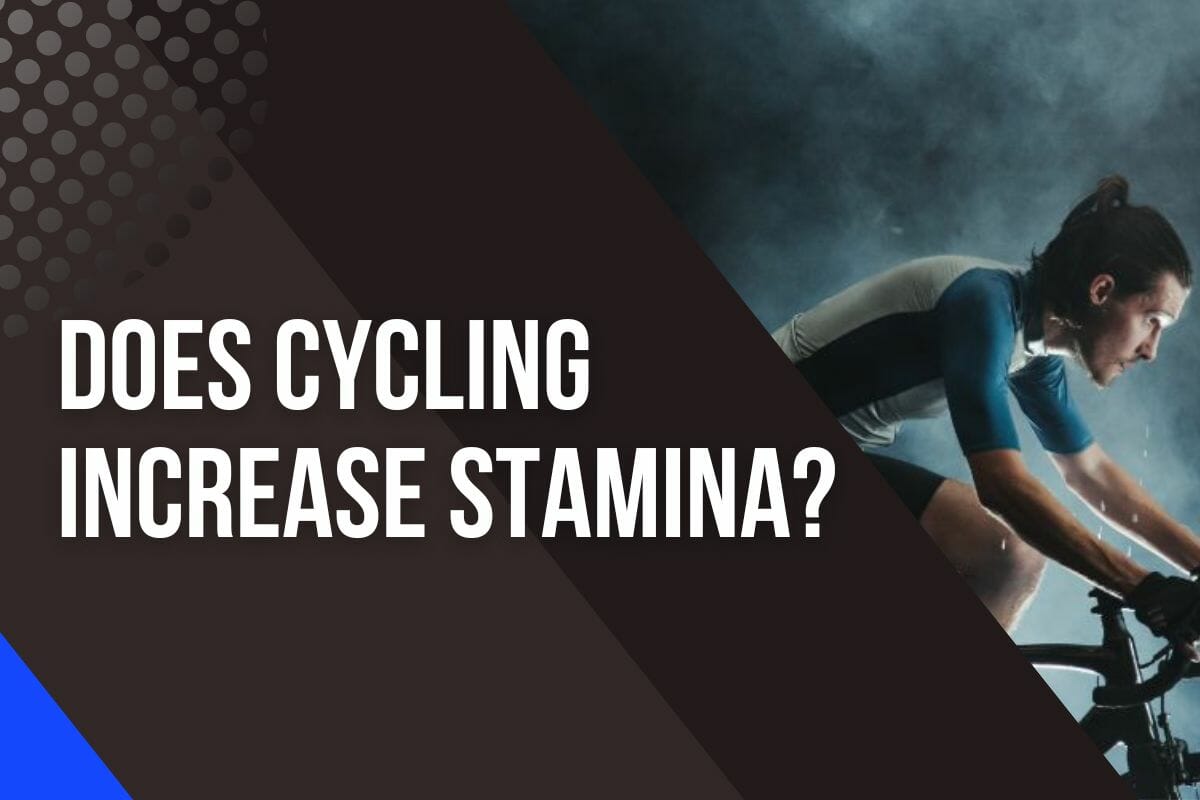How Many Calories Can You Burn In A 20-Mile Bike Ride?

Are you looking for a fun and effective way to burn calories? A 20-mile bike ride might just be what you need.
Not only is cycling a low-impact exercise that’s easy on your joints, but it’s also a great way to explore your surroundings and enjoy the outdoors.
But how many calories do you actually burn during a 20-mile bike ride?
It all depends on your weight and how fast you’re going. For example, if you weigh 150 lbs and bike for 20 miles at 12mph, you can burn around 953 calories. But, if you weigh 250 lbs and bike the same distance and speed, you can burn up to 1588 calories.
This happens because the more you weigh, the more energy your body has to exert to keep the same speed.
In this article, we’ll take a closer look at the science behind calorie burning during cycling and give you some tips on how to maximize your workout.
So, if you’re ready to hop on your bike and pedal your way to a healthier you, keep reading!
The Effect of Weight on Calories Burned
If you’ve ever wondered how many calories you burn riding a bike, the answer is a bit more complicated than you might expect.
The number of calories burned while cycling for 20 miles depends on several factors, with the weight of the rider being the primary determinant.
To better understand how weight affects calorie burn, let’s consider a table that shows the calories burned by five different riders with weights ranging from 150 lbs to 250 lbs while biking at a constant speed of 12 mph over 20 miles (or 32km).
| Rider’s Weight | Calories Burned |
|---|---|
| 150 lbs | 953 cal |
| 175 lbs | 1111 cal |
| 200 lbs | 1270 cal |
| 225 lbs | 1429 cal |
| 250 lbs | 1588 cal |
As you can see from the table, the number of calories burned increases as the rider’s weight increases.
This is because cycling is a weight-bearing exercise, and the more weight you carry, the more energy you need to expend to propel yourself forward.
In fact, research from Harvard University has shown that a 155 lb person riding at 12 to 13.9 mph can burn between 298 calories per hour. A faster rate of 14 to 15.9 mph can burn 372 calories per hour.
Weight isn’t the only factor that affects calorie burn while cycling but it is the most significant determiner.

The Effect Of Speed On Calories Burned
Speed is a crucial factor that affects the number of calories burned over 20 miles.
To illustrate this point, let’s use the table in the previous section, which shows the calories burned by riders of different weights while biking at a constant speed of 12 mph over 20 miles.
For example, let’s compare a rider who cycles at an average speed of 12 mph with another rider who cycles at an average speed of 16 mph.
Assuming both riders weigh 150 lbs, the slower rider would burn approximately 953 calories, while the faster rider would burn around 1431 calories over the same 20-mile distance.
This means that by increasing the average speed by just 5 mph, the number of calories burned can increase by nearly 50% for the same distance and weight.
Here is a table to see how speed affects calories burned riding for 1 hour.
| 150 lbs | 175 lbs | 200 lbs | 225 lbs | 250 lbs | |
| 12 mph | 572 cal | 667 cal | 762 cal | 857 cal | 953 cal |
| 14 mph | 714 cal | 833 cal | 953 cal | 1072 cal | 1191 cal |
| 16 mph | 874 cal | 100 cal | 1143 cal | 1286 cal | 1492 cal |
For someone looking to burn more calories, increasing their speed while maintaining a moderate pace could be an effective strategy.
The Effect of Age on Calories Burned
As a person ages, their maximum heart rate decreases, which can lead to a lower calorie burn during exercise.
This means that a 50-year-old person might not burn as many calories as a 25-year-old person, even if everything else is equal.
In addition to the simple fact of aging, a person’s cardiovascular fitness level can also affect their calorie burn during exercise.
As fitness improves, resting heart rate tends to decrease, which can lead to a lower calorie burn during exercise.

While a lower resting heart rate is a sign of improved cardiovascular health overall, it can mean that fewer calories are burned during a bike ride.
It is worth noting that the intensity of the ride will also have an impact on the number of calories burned.
Higher-intensity rides, such as hill climbs or sprints, will burn more calories than rides at a more moderate pace.
However, it is important to monitor heart rate during the ride and adjust the intensity as necessary to achieve the desired calorie burn.
If a person’s heart rate is too high, they may risk overexertion or injury, while a heart rate that is too low may not provide the desired calorie burn.
How To Maximize Cycling for Weight Loss
Cycling is a low-impact, high-reward form of exercise that is great for weight loss.
Whether you prefer taking your bike out on the road or hitting the stationary bike at the gym, cycling can help you achieve your weight loss goals.
To make the most of your cycling routine, here are five tips to help you effectively utilize cycling for weight loss.
1. Maintain a Steady Speed When Riding
Cycling is an excellent form of exercise that offers multiple health benefits, including weight loss and cardiovascular fitness.
However, to burn calories effectively while cycling, you need to maintain a steady speed throughout the ride. Riding a bike at a consistent speed helps elevate the heart rate to an optimal level for fat loss.
Determining the correct pace to maintain can be challenging, but a good way to start is by calculating your base training level.

This level is based on your body weight, age, and current fitness level. Once you have calculated your base training level, you can use it as a baseline for determining your training pace.
It is also essential to spend an appropriate amount of time on your bike daily to maximize calorie burn.
Research suggests at least 30 minutes of moderate-intensity exercise every day to maintain health and well-being.
However, if you want to lose weight and burn more calories, you should aim for a longer time on your bike, preferably upwards of 60 minutes per day.
2. Get Active by Cycling To Commute
One way to easily incorporate cycling into your daily routine is by using it as a mode of transportation.
Instead of driving to work or running errands, hop on your bike and let your legs do the work.
Not only will this increase your physical activity, but it will also reduce carbon emissions and save you money on transportation costs.
If you’re not a morning person, don’t worry! You can still enjoy the benefits of cycling by taking a short ride to de-stress after a long day at work.
Just remember to maintain a steady speed throughout your ride to keep your heart rate in the optimal fat-burning zone.
To maximize the effectiveness of cycling for weight loss, it’s important to create a calorie deficit by burning more calories than you consume.
3. Get a Proper Nutrition Intake
Proper nutrition is essential when cycling for weight loss. Although it’s important to maintain a calorie deficit, it’s equally important to fuel up with the correct balance of carbohydrates and protein.
Carbohydrates provide the necessary fuel for energy and muscle glycogen stores, while protein is essential for muscle recovery and growth.
A proper balance of these macronutrients will enable the body to maximize weight loss while improving overall health and fitness.

For longer rides, energy bars or gels can be useful in improving blood sugar and extending the riding duration.
These products can provide a quick source of energy and replenish important electrolytes lost through sweat.
However, it’s essential to choose products that are low in sugar and high in complex carbohydrates to avoid a sugar crash.
4. Apply High-Intensity Interval Training
HIIT is a type of cardiovascular exercise that alternates periods of high intensity with periods of rest, allowing you to burn more calories in a shorter amount of time.
To incorporate HIIT into your cycling routine, start by adding short bursts of all-out effort throughout your ride.

For example, you could pedal at maximum effort for 30 seconds, then recover for 90 seconds before repeating. Another example is to sprint up a hill, then recover on the descent.
Here’s a sample workout plan for a HIIT cycling session:
The benefits of HIIT for weight loss are particularly significant, as it can burn more calories during the workout and continue to burn calories post-workout due to the increased metabolic rate.
How Far And How Fast Should You Ride To Burn One Pound Of Body Fat
If you’re looking to burn body fat through biking, it’s important to understand how distance and speed play a key role in your progress.
According to CDC, burning one pound of body fat requires a deficit of 3,500 calories.
While it’s unrealistic for most people to burn 3,500 calories in one bike ride, calculating the distance and speed required for one pound of fat loss can help you establish a long-term goal for your biking routine.
Heavier riders burn more calories than lighter riders due to the increased effort required to move their body weight.

For a 150-pound rider, biking at a moderate pace of 12-13.9 mph, around 31 miles of distance is needed to burn one pound of body fat.
In contrast, a 200-pound rider biking at the same pace could burn one pound of body fat by biking around 23 miles.
Increase Speed To Burn More
If you’re looking for a more challenging ride, increasing your speed can help you burn body fat more efficiently.
For example, a 150-pound rider biking at 14-15.9 mph would only need to bike around 26 miles to burn one pound of body fat.
While a heavier 200-pound rider would need to bike around 20 miles to burn one pound of body fat at the same pace.

It’s important to remember that while this information is useful for setting long-term goals, it’s unlikely that you’ll burn one pound of body fat in a single bike ride.
Instead, incorporating regular biking into your exercise routine and watching your diet can lead to gradual fat loss over time.
Aim for moderate-intensity biking that raises your heart rate and breathing rate, but still allows you to hold a conversation.
How Many Calories Per Mile Would You Burn
Weight is a crucial factor that affects the number of calories burned per mile while biking. Heavier riders require more energy to move their body weight, resulting in higher calorie burn.
On average, a 150-pound rider can burn about 40-50 calories per mile when biking at a moderate pace of 12-13.9 miles per hour.
In contrast, a 200-pound rider can burn around 54-70 calories per mile at the same speed.
Here’s a breakdown of the average number of calories burned per mile for riders of varying weights and speeds:
Can You Lose Belly Fat By Riding A Bike?
Achieving optimal fat-burning doesn’t have to be complicated.
Start small by creating a calorie deficit through healthy eating and regular exercise.
To maximize weight loss, focus on high-intensity interval training (HIIT). This type of workout boosts your metabolism and continues burning calories even after you’re done.
In just 30 minutes of HIIT biking, you can burn up to 350 calories, and a full-hour ride can torch up to 700 calories.

Consistency is key, so aim for at least 150 minutes of moderate-intensity aerobic exercise per week.
Biking is a great option if you have joint issues or are recovering from an injury.
Remember, eating a balanced diet with fruits, vegetables, lean proteins, and healthy fats is crucial for creating a calorie deficit and promoting weight loss.
The Effect of Trails on Calories Burned
When it comes to burning calories through biking, there are several factors to consider such as the type of biking and the terrain.
Mountain biking and trail biking require the most physical exertion due to their rugged terrain and various obstacles.
As a result, they have the highest calorie burn of all the biking types, with an average of 500-1000 calories burned per hour depending on the intensity and the rider’s body weight.
Road biking, on the other hand, can vary in calorie burn depending on incline levels and speed.
A 155-pound person can burn up to 370-500 calories in an hour of moderate road biking, while a 185-pound person can burn up to 440-600 calories per hour.
Stationary biking can range from the hardest to the easiest way to burn calories depending on the resistance level set.

With a high resistance level, stationary biking can mimic mountain and trail biking with an average calorie burn of 700-1000 per hour.
At lower resistance levels, however, the calorie burn is less significant, with an average of 200-400 calories burned per hour.
Indoor and outdoor tracks with road bikes could be the hardest way to burn as many calories as mountain and trail biking if the incline and effort are high.
A 155-pound person on a flat surface can burn up to 540-750 calories in an hour of moderate indoor or outdoor track biking.
How Does Inclination Impact Your Calorie Burn?
When it comes to biking, the inclination of the terrain that you’re riding on has a significant impact on your calorie burn and overall workout effectiveness.
The three main types of inclines are uphill, downhill, and flat surfaces, and each of them requires different levels of effort from the rider.
Here’s how these types of inclines can impact your calorie burn during bike rides:
Uphill Incline

Cycling uphill is one of the most efficient ways of burning calories, as it requires a considerable amount of effort.
When biking uphill, your body has to work not only to propel forward but also to overcome gravity, resulting in a higher calorie burn.
This type of incline can also help improve endurance and speed, making it an excellent choice for serious athletes.
Downhill Incline
While downhill biking may seem effortless, you’re still using your muscles to control your bike’s speed and direction.
However, because gravity is doing most of the work, there is less resistance, and therefore less calorie burn.
You may still be expending energy to control your bike, but it’s not as intense as uphill or flat surface biking.
Flat Surface Incline

Riding on a flat surface may seem like the easiest way to bike due to the lack of incline, but it requires sustained movement that demands endurance and stamina.
Because flat surface biking doesn’t involve the added resistance that uphill incline provides, you will need to cycle for a more extended period to burn the same amount of calories.
Where Is The Best Place to Ride Your Bike to Burn the Most Calories?
The best place for an individual largely depends on their personal preferences.
However, studies suggest that biking on trails and mountains may provide a more intense and challenging experience that could result in a higher calorie burn.
It’s crucial to choose a place you enjoy and can maintain as a habit regularly.
Going off-road and exploring new terrains can not only make your ride more exciting, but it can also help you burn more calories than just sticking to the road.

Don’t be afraid to challenge yourself by riding uphill.
Start with smaller hills and work your way up to bigger ones to really get your heart rate pumping. And remember, try to avoid coasting and keep pedaling to maximize calorie burn.
If you’re feeling adventurous, consider taking longer rides to really amp up your workout. Just be sure not to overdo it and risk injury.
Mix things up by varying your route or even biking to work. And if the weather isn’t cooperating or you’re short on time, don’t forget about the convenience of stationary bikes.
Spin classes at the gym are a great option to get your heart rate up and burn more calories.
Last but not least, remember that the intensity of your ride matters. Vigorous biking burns more calories than moderate biking, so push yourself to really get the most out of your workout.
Do You Burn More Calories Sitting or Standing While Cycling?
Standing up while cycling burns more calories than sitting down. And there are many benefits to it too.
By standing up, you not only increase your heart rate but also engage your core muscles and develop upper body strength as you handle those handlebars. Besides, your bum will thank you for that.
So, it’s a win-win situation. You get to burn more calories and tone your muscles at the same time.
But don’t forget to maintain a balance between standing and sitting. I recommended splitting the two positions 50/50 during a bike ride.
For example, most people stand up when going uphill and sit down when going downhill. This way, you can enjoy the benefits of both positions and ensure that your body doesn’t get too used to one.
Final Thoughts
A 20-mile bike ride can burn a significant amount of calories depending on factors such as weight, speed, and terrain.
If you’re looking to increase your calorie burn during a 20-mile bike ride, consider incorporating intervals and hills into your route and maintaining a consistent pace.
And don’t forget to refuel with a balanced meal or snack post-ride to aid in recovery and support your fitness goals.





